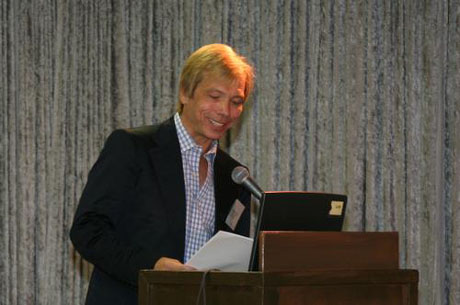
Wayne Dolcefino’s expose of the misuse of Houston Arts Alliance money kicked off last night on KTRK’s 10 O’clock news with a lot of frothing at the mouth: a brief clips of sexy dancers, a mural dismissed as a "flaming chicken", and the striking phrase, "lesbian puppet tourism" excerpted from one particularly evocative proposal.
Here we go again: the election’s over and the airwaves need fresh meat, so the semi-annual art-bash is on the menu. The disturbing thing is that we keep giving them ammunition.
Content based attacks- whether something is good art or not, or whether it is appropriate for public funding, are unavoidable. No one ever will ever agree on that, so publicly funded projects are always vulnerable to irate dissent, as they should be.
What is avoidable is the easy-to-find real misallocation of money. Artists who didn’t do the work they said they would, projects that never came off, or were so poorly attended as to be worthless from a tourism standpoint.
All of us who have gotten HAA grants know that there is a fundamental dishonesty in trying to link out work and our efforts to tourist dollars. Sure, we’re an attraction, but that’s not our real value to this city, and for years the HAA and its predecessor, CACHH, have been bending their numbers and their rhetoric to "prove" that the arts are a moneymaker, because their jobs, their very existence as an organization, depended on that Hotel Occupancy Tax money.

Apologetic, defensive, and ill-informed, Jonathan Glus, the HAA director who appeared in the hot seat, cut a poor figure as arts paladin. Sweating, he said "I can honestly say, Wayne, I’ve never heard of lesbian puppet tourism" when he should have said "where can I get tickets!?"
UPDATE:
The second installment of the series, which aired Monday night, was more of the same slanted raving, but getting thinner: the flaming chicken debate was re-hashed. In one funny moment, Glus nearly called it a flaming chicken himself!
Margo Sawyer’s colorful building block piece at Discovery Green came into Dolcefino’s sights, and he managed to scrape up two passersby who didn’t think it was art, and that it cost too much (but nobody said they didn’t like it) He never mentioned that it was a part of the park’s structure, or comparing it’s relatively modest price tag to the vastly more expensive archtecture all around it. Oh, well.




2 comments
I can’t decide which I found more appalling. Dolcefino’s incredibly biased report (Dolcefino – the new Tollett) or Glus’ embarrassingly inadequate response. The public is ill served in either case.
I was just a kid when the NEA was established, but I recall reading about the debate that preceded its creation. On one side were the artists who said, “Government patronage, like all public art, is subject to the whims of committees and other forms of collective taste. It cannot possibly support good art, only art that passes muster and art that is made by people good at writing grant proposals. We prefer to keep support for the arts in private hands, via the marketplace.” The other side, those advocating the NEA, knew that innovation often occurred outside of the marketplace, and even those collectors with some courage cannot always be counted upon to buy difficult art or work that defies being turned into a commodity. The compromise for the NEA’s birth involved changes in the tax code too, rescinding the artist’s right to write off the fair market value of his work if it were donated to a museum. (Before 1965, artists could do that.)
What I’m saying is…artists have always faced the dilemma of pleasing somebody in order to make a living. Public art commissions can be soul killers simply because artists have to find ways to amuse government officials, firemen, well-connected spouses, and many other denominators of taste that, experienced as a collective opinion, would make many of us artists not bother with it in the first place. Attempts at democratic opinion by committee often make us yearn for enlightened despotism, only that doesn’t work either. Trying to survive via the marketplace has its pitfalls and potholes, too. Who said dealers know everything? Why don’t more private art buyers visit artists in their studios? How many dealers fuck artists out of their money and then tell the artists if they complain, they can leave, because there are ten other artists who want to join up and get fucked later on?
Consider the autonomy artists retain by always having a means to make a living that does not put their heads in the chopping block of patronage, public or private. Having a day job is a way to remain free…free to experiment, free to be offensive, and yes, free to make work that people like, too.
Another thing…the amount of money spent on public art, especially in Texas, is a fucking JOKE. The pittance handed out to artists willing to jump through public hoops is so small to begin with that the Wayne Dolcefinos of the world ought to be embarrassed if they complain about work that some talented person made and got the equivalent of two bucks an hour to make. I remember Jesse Helms in the Senate bitching about Andres Serrano, acting offended about a damn polaroid picture of a plastic crucifix in a jar of pee. All the time, Senator Helms was voting to pay a thousand times more to build atomic weapons, fund bullshit foreign policy, and do stuff that actually harmed people.
Either path for an artist is tricky. Having a day job is not something to be ashamed about. Sometimes it allows you to say “fuck you” to people if you want to.